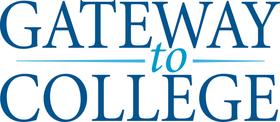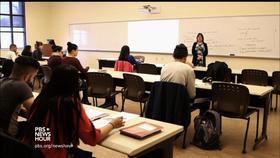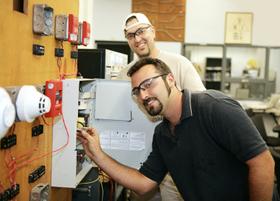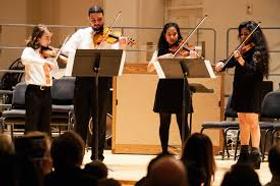Community colleges strive to operate as institutions of higher education that meet the needs of many today. Convenience and flexibility are the watchwords of these schools that host adult students with a wide range of family and professional responsibilities. To achieve those goals, many community colleges across the country are increasing their selection of online and hybrid courses, allowing many busy students to get in at least a portion of their study time from the comfort of home. As the demand for online coursework continues to grow, community colleges grapple with how to provide ultimate flexibility to students without sacrificing instructional quality or completion rates to give students the education options they are asking for.
A Look Back at The Growth of Online Options
Historically, online courses have been increasing at community colleges nationwide since 2005, according to a recent report at Santa Ynez Valley News. The publication cites a report, titled, “Going the Distance: Online Education in the United States, 2011,” which showed that 32 percent more students took an online course during the fall 2011 term. That means more than 6.7 million community college students took advantage of online opportunities during that semester alone.
The number marks a significant increase in online courses from the same semester in 2008 when just 4.6 million students at community colleges took an online course. The 2008 numbers were a 17-percent increase from 2007, suggesting an uptick in the demand for online courses overall. In fact, the Marin Independent Journal states that online courses have increased by five million between 2002 and 2011.
This video offers suggestions on how to learn successfully online.
Where were the Online Options in the 2000s?
While online classes can be found at community colleges across the country, some areas have seen significant enough increases to make headlines in their local news. The Santa Ynez Valley News reports that online class enrollment is growing by leaps and bounds at California schools like Hancock College and Santa Barbara City College. Santa Barbara saw a total online enrollment of nearly 8,300 students for this academic year, which marks a 35-percent increase from 2007-2008.
The New Hampshire Community College System has also seen an increase in demand for online courses, according to a recent report at the Concord Monitor. The state system worked overtime to produce online and hybrid classes to meet the needs of busy students in the area. Ross Gittell, chancellor of the community college system, told the Monitor that schools have doubled the number of students taking online or hybrid classes in the last four years. Currently, nearly 10,000 students in the state seek online coursework as a part of their degree program.
In Iowa, community colleges are hopping onboard the distance learning bandwagon as well. The Gazette reports that community colleges in the state saw a 2.5 percent increase in online course enrollment in 2012 and an 82.4-percent growth in online classes since 2007. The recent numbers were based on the annual Condition of Iowa’s Community Colleges report. All 15 of the state’s community colleges were included in the statistics.
California Embraces Online Education – Almost
California community colleges also have plans to increase their online options for students, according to a report at the Sacramento Bee. California Governor Jerry Brown has said the move to distance learning is an inevitable step if the school system wants to continue to accommodate a growing number of students within their current budget restrictions. Schools in the state have already begun the process, slowly offering a handful of online course selections to test the distance learning waters with their students.
The idea of increasing distance learning is not without concern from educators, however. Professors at California community colleges told the Sacramento Bee that while they do not completely oppose the idea of online classes, they want to be sure this system guarantees the same rigor and quality as courses taught in the classroom. Faculty members have told community college officials they want to be assured of continuing control of the curriculum. They also worry that more online classes could result in staffing cuts at community colleges across the state.
“All of it is worth experimenting with,” Lillian Taiz, a professor, and president of the California Faculty Association, told the Sacramento Bee. “Nobody opposes it. We don’t think it’s a bad thing. But I think we have to be realistic about what we’re doing, and at the very least, we have to do no harm.”
Students and faculty have also noted that success in online coursework requires more self-discipline than classes on the community college campus. Accountability tends to be missing in a situation where students and professors do not engage in regular face-to-face contact. However, online interaction between professors and students can help the accountability factor and increase the odds for student success in this style of college teaching.
Completion rates are also a concern with online classes. The Sacramento Bee reports that California students that take online classes are less likely to finish their degree programs. Around 67 percent of traditional students earn their degrees on time, while only 57 percent of students taking online courses completed their degrees in the same time frame.
Despite concerns, Governor Brown wants to invest nearly $37 million in distance learning in his state. Around $16.9 million of that allotment would go directly to community colleges to develop online learning options for their students. The rest would be invested in four-year schools to produce similar distance learning programs. Time will tell whether additional online options will help students in California and across the country complete the higher education they need to get the jobs they want.
Fast-forward To 2019 and the Pandemic
Advances in online teaching applications have made teaching online much more effective than it was ten years ago, even five years ago. Most applications are cloud-based, so you don't have to worry about having special equipment to access the classes. Your professors will give you instructions about best practices. As far as getting the quality education you are paying for, be assured that the same curriculum and teaching the school used in the classroom will be used online. The only difference is the method by which the teaching is delivered.
Questions? Contact us on Facebook @communitycollegereview.





















































































